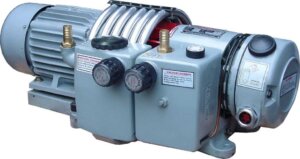bestiwc is the best place to sell IWC replicas and publish IWC replica information
Explore our replica Rolex Cellini watches catalog. We offer the best Swiss quality on the market.
2023 Newest fake watches on sale! With less money, you can possess CA best quality cheap replica watches!
Does the Question arise that how Vacuum Pumps Work? Yes, A vacuum evacuates the atmosphere from a sealed volume. This difference in pressure creates a partial vacuum. Vacuum pumps come in many different designs, but the most crucial point is that you get the right one for your application.
Kalbro Vacuum Pumps
This means selecting the correct size of pump for optimal efficiency. Vacuum pumps work by evacuating air that is being pumped into the pump’s intake. This intake is connected to vacuum exhausts, which remove exhausted gases as it fills the pump’s chamber or tubing. A vacuum pump is also known as a vacuum cleaner or an exhaust system and is used for removing gases.

Vacuum Pumps work – Kalbro
How Does a Vacuum Pump Work?
A vacuum is a place where there is no matter and the pressure of the gaseous substance within this confined space is below atmospheric pressure. Vacuum pumps work by changing the air pressure in a contained space to create a full or partial vacuum, either mechanically or chemically.
Gas molecules will always try to balance out their pressure if they are in different areas. That is done by transferring molecules from high-pressure regions to low-pressure and vice versa. This is because if the area of low pressure is created, the gas will flow from high pressure to the new area of low pressure until they are of equal pressure.
Notice that this vacuum process is not created by “sucking” gases but by pushing molecules. Vacuum pumps essentially move molecules from one region to the next to create a vacuum by changing high and low-pressure states.
Vacuum Pump Basics
As molecules are removed from the vacuum space, it becomes exponentially harder to remove additional ones, thus increasing the vacuum power required. The pressure ranges are placed into several groups:
- Rough/Low Vacuum: 1000 to 1 mbar / 760 to 0.75 Torr
- Fine/ Medium Vacuum: 1 to 10-3 mbar / 0.75 to 7.5-3 Torr
- High Vacuum: 10-3 to 10-7 mbar / 7.5-3 to 7.5-7 Torr
- Ultra-High Vacuum: 10-7 to 10-11 mbar / 7.5-7 to 7.5-11 Torr
- Extreme High Vacuum: < 10-11 mbar / < 7.5-11 Torr
Vacuum pumps are classified by the pressure range they can achieve to help distinguish their capabilities. These classifications are:
- Primary (Backing) Pumps that handle rough and low vacuum pressure ranges.
- Booster Pumps handle low and medium pressure ranges.
- Secondary (High Vacuum) Pumps handle high, very high, and ultra-high vacuum pressure ranges.
Depending on the pressure requirements and operating application, vacuum pump technologies are either wet or dry. Wet pumps use oil or water for lubrication and sealing, while dry pumps have no fluid in the space between the rotating mechanisms or static parts that are used to isolate and compress gas molecules. Without lubrication, dry pumps have very tight tolerances and will wear out quickly. Let’s look at some of the methods used in a vacuum pump.
Vacuum Pumps work – Kalbro
Conclusion
Picking the right vacuum pump for your removal process can sometimes be tricky. There are many factors to consider, including your pumping pressure and maximum flow rate, the type of gas, required system volume size, and lifetime use. This can be a daunting task that can be time-consuming and costly if not chosen right. The process can make this selection process simple with expert knowledge, a vast array of pumps and equipment inventory, and full engineering and fabrication facilities if your system requires a custom-manufactured solution.
Vacuum Pumps work – Kalbro
Kalbro is an authorized provider of a unique range of products that can meet the demand for diverse applications in every industry. There are many different types of pumps for different purposes and each type has different features and applications. You will have to decide what pump would work best for your needs.
by Kalbro
- Author – Kundan Kumar
- Instagram – kundan_14730

